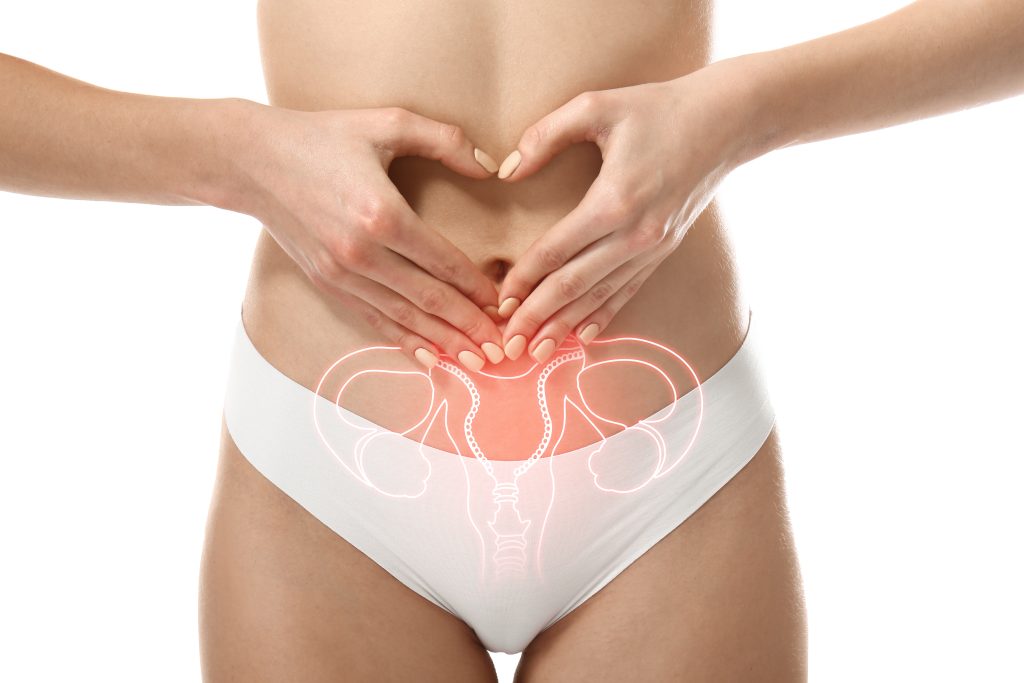Endometriosis intensifies menstrual pain and causes heavier bleeding
Endometrial tissue normally coats the uterus, but sometimes this tissue “wanders” into the ovaries, fallopian tubes, colon and small intestine and pelvis, so that it somehow grows into the surrounding tissues or coats them like the uterus and then problems arise. Usually there are no clear symptoms, except in the menstrual phase, then endometriosis intensifies menstrual pain and causes more heavy bleeding, swelling, and can be a cause of infertility, over time the condition worsens. Endometrial tissue glued to the ovaries creates endometriomas, cysts on the ovaries.
Heavy menstrual pain is not the only cause endometriosis, and no profuse bleeding, if there is swelling in the pelvic area, if you are tired, nauseous, if your sexual intercourse is painful, you do not remain pregnant even though you want to conceive, this phenomenon may be suspected, and still need to determine the right state. The endometrial tissue wherever it spreads behaves as in the uterus, the blood vessels rupture and therefore menstrual bleeding is more abundant and intense.
Why endometrial tissue walks and why endometriosis occurs is not known
Most women do not even discover this problem, and if they seek help from their gynecologist due to heavy bleeding, sooner or later the right diagnosis will be made. Why endometrial tissue walks and why endometriosis occurs is not known, and why this condition is most often left untreated is explained by the fact that this moved tissue, wherever it settles under the influence of hormones, behaves as if it were in the uterus and excess blood flows from a woman’s body. menstruation.

Women who suffer endometriosis they often have a shortened menstrual cycle, shorter than 27 days, they can bleed twice during one cycle, they need painkillers during bleeding constantly, they can gain weight for no reason, they have weakened immunity, they probably got their first period very early, around 11 years. Millions of women in the world suffer unbelievably every month, mostly by helping themselves with painkillers, sometimes receiving hormone therapy to prevent extreme estrogen secretion, but there is no real cure.
Endometriosis is spread by blood, and sometimes surgery is inevitable
Endometrial cells travel through the blood and thus wander to the wrong place. Sometimes women have a feeling that something is wrong with their kidneys or that they have inflammation of the bladder or urinary tract. Endometriosis is spread by blood, and sometimes surgery is unavoidable, sometimes it is partial, and if the ovaries, fallopian tubes and surrounding tissues are severely affected, a complete hysterectomy is performed, which means that the uterus and both ovaries are removed. they have already given birth more often than those who have not yet given birth.
Partial endometriosis is performed in milder cases and the person is still helped with painkillers and medications that suppress the growth and spread of new endometrial tissue. In very young women, as much of the “displaced” endometrial tissue is removed laparoscopically, with the aim of preserving the woman’s ability to give birth. Hormone therapy can slow down the development of new endometrial formations in the wrong place, as well as accompanying growths, and menstrual problems are reduced.
Common signs and symptoms of endometriosis
- Painful periods (dysmenorrhea)
- Pain with intercourse.
- Pain with bowel movements or urination.
- Excessive bleeding.
- Infertility.
- Other signs and symptoms.
source: mayoclinic
MORE HEALTH NEWS: How to prevent sweating under the armpits